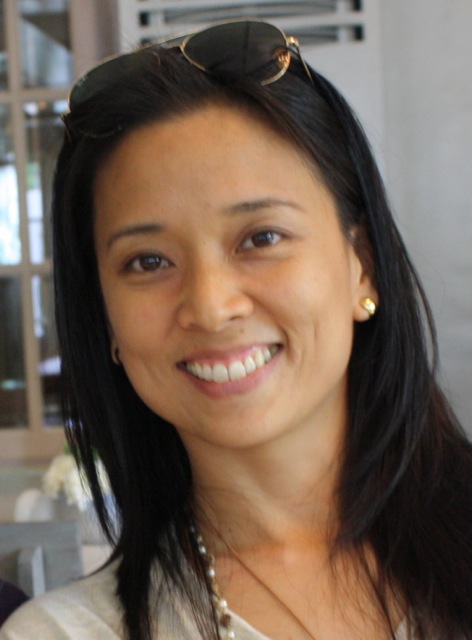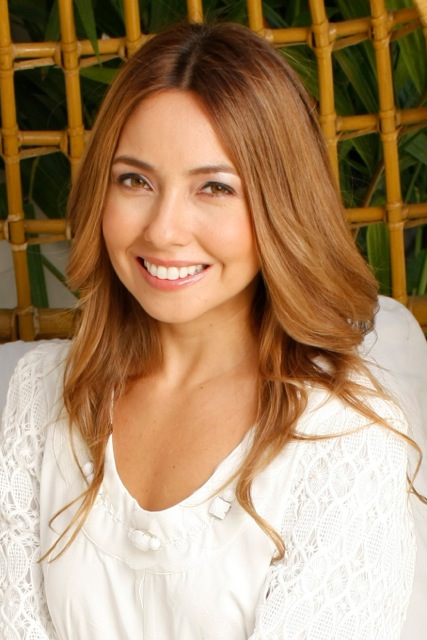SUMMARY
This is AI generated summarization, which may have errors. For context, always refer to the full article.
 |
Sustainable living is no easy task. When I began my journey as a young mother 14 years ago, eating well could not happen without raising your carbon footprint; one had to traverse the city to get organic produce. Today, thanks to initiatives like Holy Carabao, we can live sustainably and authentically.
Of all causes she could have possibly taken on, Hindy Tantoco chose food–an issue that I feel to be one of the biggest questions in our quest for true sustainability. She went straight to the core and changed her life to make ours better. Though most people associate her with fashion and glamour, that persona is but a miniscule fragment of who this amazing mother of three really is.
Together with husband, Gippy, they are the force behind the Fun Farm in Sta. Elena, Cabuyao, Laguna, a haven all children love and Holy Carabao, an organic/biodynamic farm that supplies nourishment to many eco-conscious homes in Manila.
What made you start Holy Carabao?
I’ve always loved nature, animals, the outdoors. When I was in high school, I started an anti-pollution group and joined the World Wildlife Fund. Then I went to college, migrated to the US, and had a child. When we moved back to Manila, I was a vegetarian. I found it extremely difficult to eat at a restaurant because everything was cooked in lard or animal stock or with bits of pork. I couldn’t understand it.
In 2004, I had a second child who was diagnosed with a rare condition. That was the last straw. I studied and researched. It became crystal clear that we had to take control of what we eat and how we medicate ourselves. Once I got a glimpse of the truth, it was impossible to do nothing. So, there was about a 25-year build-up — which may have taken even longer had Life not said, “Enough.” When my husband and I talked about our issues with the food industry, he suggested we plant our own vegetables on his property. We did, but soon realized it wouldn’t work unless we lived on the farm. So we moved. Soon, we decided that if we were going to plant vegetables for ourselves, we might as well plant for friends and family. That’s when it became a business. We hired a farm manager and attended workshops on organic and biodynamic agriculture. I also learned a lot from my father who’s had years of experience farming red rice in the Bicol region.
When my husband and I talked about our issues with the food industry, he suggested we plant our own vegetables on his property. We did, but soon realized it wouldn’t work unless we lived on the farm. So we moved. Soon, we decided that if we were going to plant vegetables for ourselves, we might as well plant for friends and family. That’s when it became a business. We hired a farm manager and attended workshops on organic and biodynamic agriculture. I also learned a lot from my father who’s had years of experience farming red rice in the Bicol region.
What is your biggest obstacle and how are you trying to overcome it?
Money. That’s still an ongoing battle.
Marketing. But I didn’t give up, I just kept preaching about the benefits. Eventually people called me for advice on food. I offered door-to-door delivery service. It initially bore a big hole in our pockets, but it has finally paid off. I forced myself to join Facebook and a farmer’s cooperative.
Spoilage. We have less of it now. I also sell to supermarkets where the turnover is much quicker than direct sales.
What were the surprises/perks that you didn’t expect when you began?
My children are growing up on a farm. We just wanted food we could trust, but now our home is surrounded by our farm and the children see that daily. I hope they look back at their childhood with happy memories about Holy Carabao.
What is sustainable living to you and how do you practice it at home?
I used to try to envision the Whole and try to ensure that that Whole was kept whole as often as possible. Whenever I did something, I tried to see through all the reverberations. It was enough to drive one insane; I ended up finding so much wrong in the world and in myself. My new rule of thumb is Reverence: the path of least destruction. It has a wide gaze that encourages love, creativity, respect, truth, justice, action. The tricky part is cultivating it for things you don’t naturally have reverence for.
I also set my sights on The Next Step — the effect of any particular action or choice. If I use this detergent to wash my clothes, what is The Next Step? Where does it go? What happens to it? Sometimes I get carried away and think of Step 256, then I start to lose my mind because there’s so much we are not in control of. I remind myself to think of the small picture first. We are so much more in control of that. It’s so easy to brush it off, but our small actions build up.
My attempt at sustainability and wholehearted “holisticness” covers almost all areas of my life from food to housekeeping to medicine to education to management.

What is your picture of a sustainable Philippines? Can we get there?
I think we have amazing initiatives in our country but everything is still so clustered and tribal. To see widespread change, we need laws that will not just protect the environment, but also protect us from the food, medical, and pharmaceutical industry. We cannot compartmentalize sustainability.
Very simple examples: the distribution of relief goods to flood victims in plastic bags, or nutritionally dead hospital food. Also, there will be no sustainable Philippines if there is no sustainable planet. We can no longer just think of our own backyard. We are all in this together. We need a global resolution. It’s the only way.

Below are Holy Carabao’s contact details:
Holy Carabao
holycarabao@gmail.com
Phone 0918 8886588 and 0929 7521076
Website http://www.holycarabao.com
It is clear that when you work with land, food, and nature consciously, the effects go beyond your table. Hindy shows us that when we become agents of ecological change, our lives are transformed in ways we could not have possibly imagined. – Rappler.com
Twitter: @panjeetapales
www.panjeetapales.com
Add a comment
How does this make you feel?
There are no comments yet. Add your comment to start the conversation.